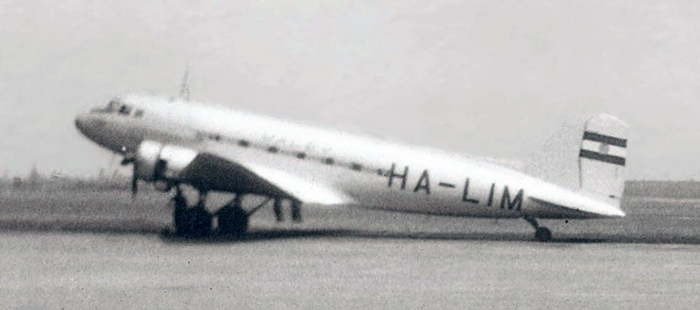Crash of a PZL-Mielec AN-2TP near Rocca di Mezzo: 3 killed
Date & Time:
Mar 9, 2002 at 1339 LT
Registration:
LY-AVD
Survivors:
No
Schedule:
Budapest - Tunis
MSN:
1G137-53
YOM:
1972
Flight number:
SJK2801
Crew on board:
2
Crew fatalities:
Pax on board:
1
Pax fatalities:
Other fatalities:
Total fatalities:
3
Circumstances:
The aircraft departed Budapest-Ferihegy Airport at 0829LT on a VFR flight to Tunis. According to the flight plan the aircraft would fly over Split, Pescara, crossing the Apennines towards Ostia and then onwards to Tunis. Weather conditions over the central part of Italy were poor with a cold front associated with thunderstorm activity, low clouds and icing conditions. After passing over the Adriatic sea, the aircraft overflew Pescara at 1320LT where the pilot informed ATC that the aircraft was inbound Aneda (a reporting point 19 NM East of Monte Rotondo) at a cruising altitude of 5.500 feet. While in vicinity of Pescara, ATC requested and obtained confirmation from the crew that he was able to continue under VFR mode. Shortly later, at a speed of 115 knots, the single engine aircraft struck the slope of Mt Rotondo (1.880 metres high) located near Rocca di Mezzo. The aircraft disintegrated on impact and all three occupants were killed.
Probable cause:
Analysis of available evidence make it reasonable to classify the event investigated as an unintentional terrain impact, Controlled Flight Into Terrain (CFIT). At accident time, because of the reduced visibility, incompatible with VFR flying, the crew could not evaluate correctly the orography of the area along there route. It has to be noted that it was not possible to ascertain if adequate maps were available to the crew showing the exact position of ground relief and obstacles. It was not possible to determine if the pilots had flown across the same area in the past. Given the meteorological conditions over the area, the crew did not conform to the Visual Flying Rules that mandated for a track change to maintain the required flight parameters (visibility/clearance from obstacles) and/or a diversion to a suitable alternate airport (as international rules mandate).
Contributing factors:
Analysis of available evidence suggests that the following may be considered as contributory factors to the accident. The prevailing meteorological conditions existing on March 9, 2002 over the flight path of LY-AVD across the central part of Italy did not allow for the flight to be continued under VFR. The Antonov AN-2 was not fit for flying in low visibility (IMC) and was not equipped for flying in icing conditions. The pilot of the LY-AVD did not hold the required English language radio-telephony (RT) qualification to operate outside the country of licensing. The pilot of the LY-AVD did not hold an IFR qualification (for flying in IMC).
Contributing factors:
Analysis of available evidence suggests that the following may be considered as contributory factors to the accident. The prevailing meteorological conditions existing on March 9, 2002 over the flight path of LY-AVD across the central part of Italy did not allow for the flight to be continued under VFR. The Antonov AN-2 was not fit for flying in low visibility (IMC) and was not equipped for flying in icing conditions. The pilot of the LY-AVD did not hold the required English language radio-telephony (RT) qualification to operate outside the country of licensing. The pilot of the LY-AVD did not hold an IFR qualification (for flying in IMC).
Final Report:
Crash of a Tupolev TU-154B-2 in Thessaloniki
Date & Time:
Jul 4, 2000 at 1657 LT
Registration:
HA-LCR
Survivors:
Yes
Schedule:
Budapest - Thessaloniki
MSN:
82A543
YOM:
1982
Flight number:
MA262
Crew on board:
8
Crew fatalities:
Pax on board:
86
Pax fatalities:
Other fatalities:
Total fatalities:
0
Captain / Total hours on type:
7000.00
Copilot / Total hours on type:
566
Aircraft flight hours:
22409
Aircraft flight cycles:
13583
Circumstances:
Originally, flight MA262 from Budapest to Thessaloniki should be performed by a Boeing 737-300 HA-LES but due to technical problems, a Tupolev TU-154B-2 was dispatched. Following an uneventful flight, the crew was cleared for a VOR/DME approach to runway 34 followed by a visual circle to land on runway 28 as the runway 34 was closed to traffic due to construction works. Because a Boeing 757 slowed to vacate the runway after landing, ATC instructed the crew to extend the downwind leg for runway 28. For unknown reasons, the crew failed to comply with this instructions and performed 'S'. On final approach, the tower controller informed the crew that he forgot to lower the undercarriage. The captain increased engine power and initiated a go-around procedure but this decision was too late. The aircraft continued to descend and struck the runway surface in a gear-up configuration at 1657LT. The aircraft suffered substantial damages but the crew managed to go-around and to follow a holding pattern. A safe landing was completed at 1715LT. All 94 occupants evacuated safely while the aircraft was damaged beyond repair.
Probable cause:
Despite repeated instructions of the control tower the crew did not carried out a short turn for landing, resulting in:
- The aircraft was not aligned with the runway in time (unstabilized approach).
- Attention of the cockpit crew was to exclusively dedicated to performing sudden maneuvers at low altitude, in order to align the plane with the runway.
- Failure to lower the undercarriage in accordance with the applicable procedures for this flight phase.
Contributing Factors:
- The apparent inactivation of the audible warning when the undercarriage was not deployed.
- Lack of Cockpit Resources Management.
- The aircraft was not aligned with the runway in time (unstabilized approach).
- Attention of the cockpit crew was to exclusively dedicated to performing sudden maneuvers at low altitude, in order to align the plane with the runway.
- Failure to lower the undercarriage in accordance with the applicable procedures for this flight phase.
Contributing Factors:
- The apparent inactivation of the audible warning when the undercarriage was not deployed.
- Lack of Cockpit Resources Management.
Final Report:
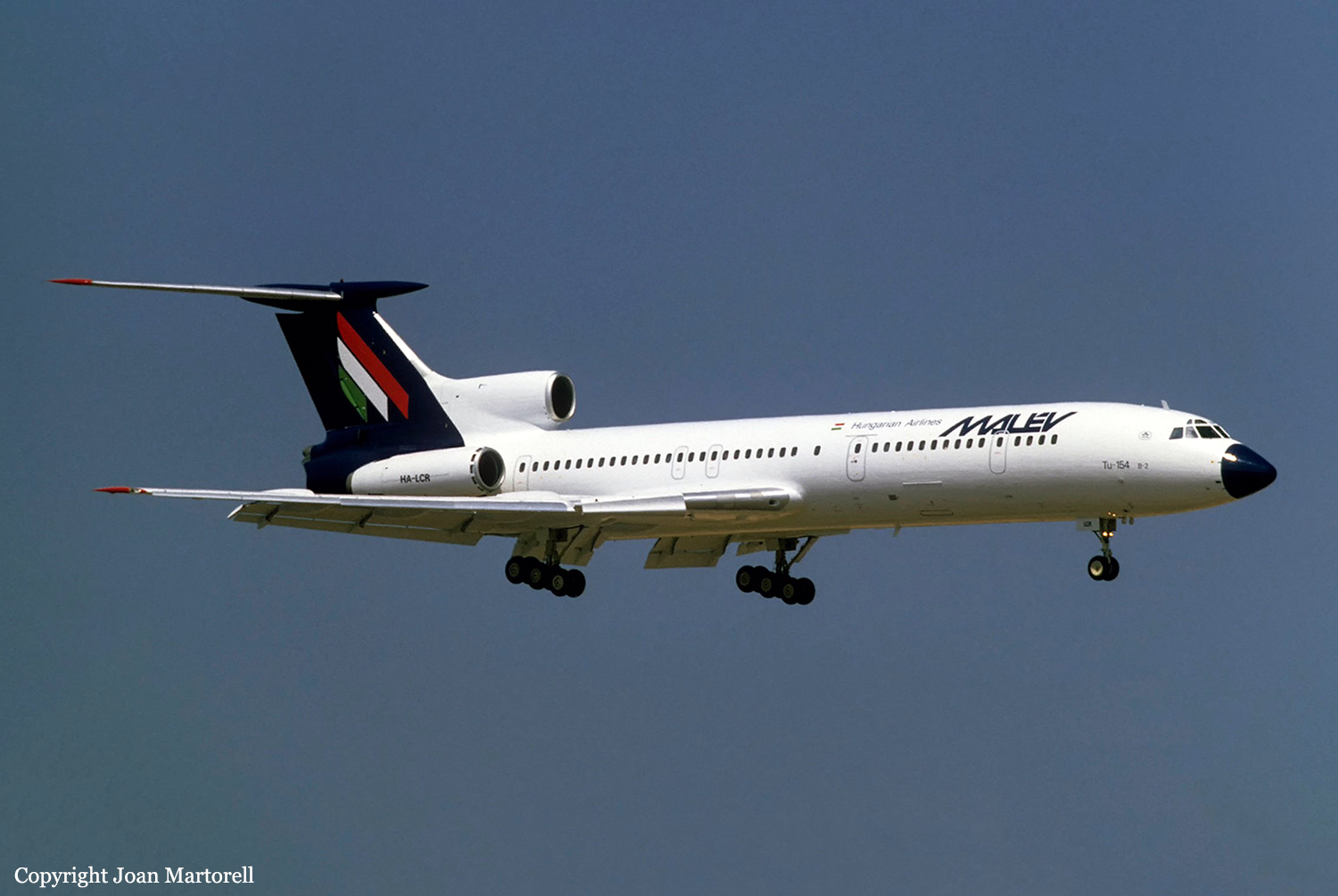

Crash of a Cessna 421C Golden Eagle III in Budapest
Date & Time:
Mar 25, 1993
Registration:
HA-ACA
Survivors:
Yes
Schedule:
Budapest - Budapest
MSN:
421C-0615
YOM:
1979
Crew on board:
2
Crew fatalities:
Pax on board:
0
Pax fatalities:
Other fatalities:
Total fatalities:
0
Circumstances:
The crew was engaged in a local training flight at Budapest-Ferihegy Airport. In unknown circumstances, the crew was forced to attempt an emergency landing when the aircraft crashed near the control tower, bursting into flames. Both occupants were injured.

Crash of a PZL-Mielec AN-2P in Pilisszentlélek: 2 killed
Date & Time:
Mar 31, 1987
Registration:
SP-DNM
Survivors:
No
Schedule:
Budapest - Warsaw
MSN:
1G107-60
YOM:
1969
Crew on board:
2
Crew fatalities:
Pax on board:
0
Pax fatalities:
Other fatalities:
Total fatalities:
2
Circumstances:
The single engine airplane departed Budapest-Ferihegy on a ferry flight to Warsaw. En route, the crew encountered icing conditions and poor weather. He was cleared to return to Budapest and was instructed to maintain 4,000 feet minimum altitude. Few minutes later, the aircraft lost height and crashed on the slope of a hill located near Pilisszentlélek. Both occupants were killed.
Probable cause:
It is believed that the crew lost control of the airplane following an excessive accumulation of ice on fuselage, wings and tail.
Crash of an Antonov AN-26 at Szentkirályszabadja: 4 killed
Date & Time:
Dec 6, 1986
Registration:
210
Survivors:
Yes
Schedule:
Budapest – Szentkirályszabadja
MSN:
2210
YOM:
1974
Crew on board:
5
Crew fatalities:
Pax on board:
0
Pax fatalities:
Other fatalities:
Total fatalities:
4
Circumstances:
On final approach by night to Szentkirályszabadja AFB, the aircraft crashed in a field and was destroyed by impact forces. Four crew members were killed while the fifth occupant was seriously injured. There were severe icing conditions at the time of the accident.
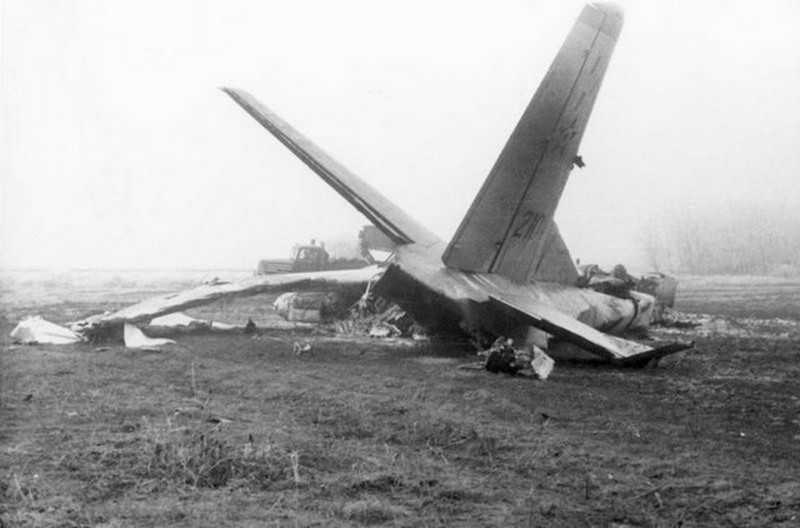
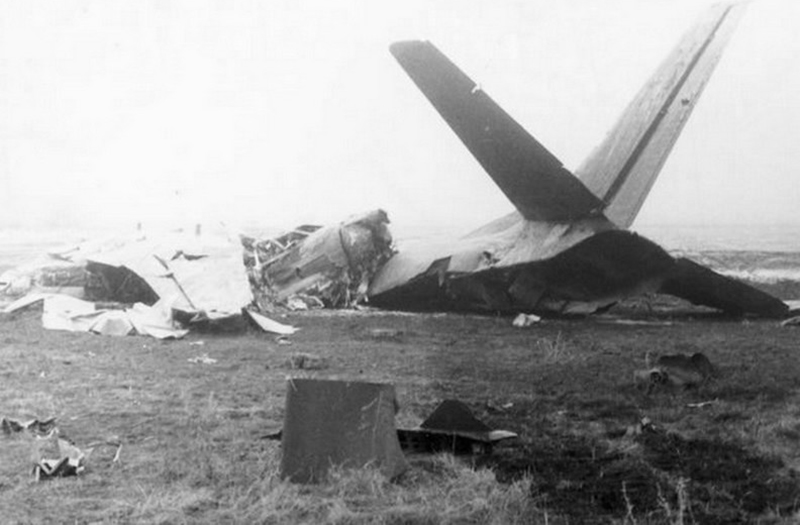
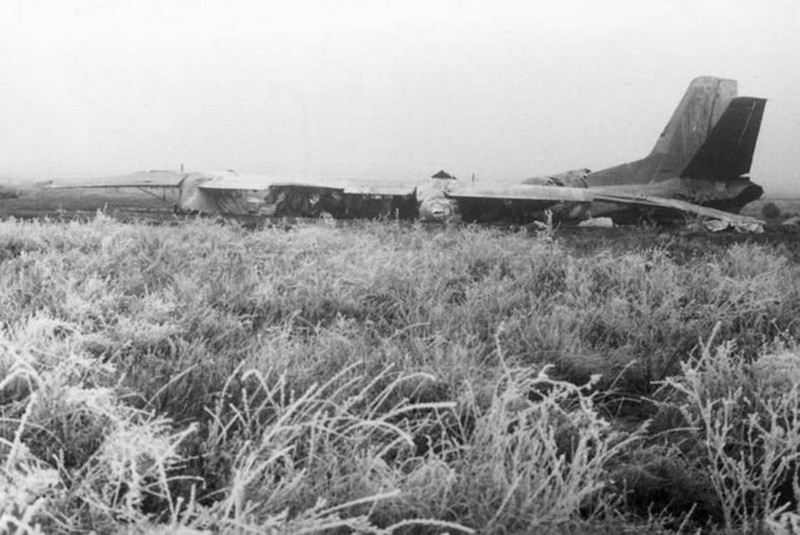
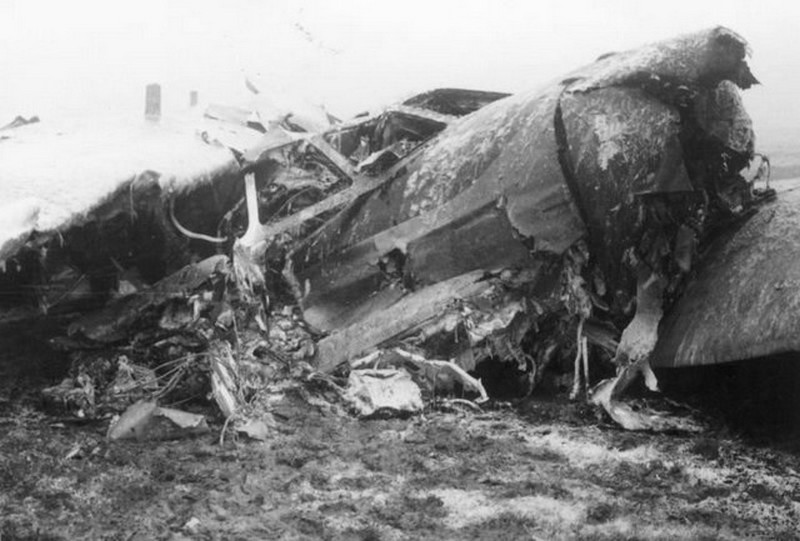
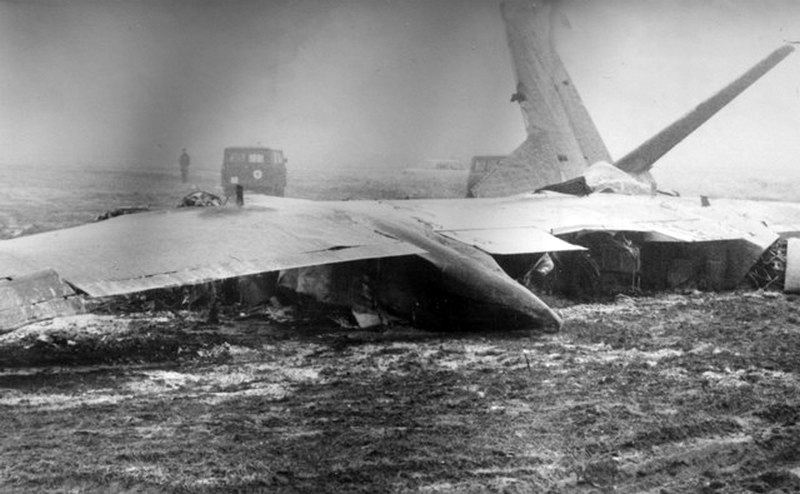
Crash of an Ilyushin II-18V in Budapest: 9 killed
Date & Time:
Jan 15, 1975 at 1721 LT
Registration:
HA-MOH
Survivors:
No
Schedule:
Berlin - Budapest
MSN:
184 0071 04
YOM:
1964
Flight number:
MA801A
Crew on board:
9
Crew fatalities:
Pax on board:
0
Pax fatalities:
Other fatalities:
Total fatalities:
9
Circumstances:
The approach to Budapest-Ferihegy Airport runway 31L was initiated in poor weather conditions with limited visibility due to fog. On short final, the pilot-in-command elected to make a go-around when the airplane struck the ground and crashed 1,360 meters short of runway 31L threshold and 120 meters to the left of its centerline. The airplane crashed and burned and all nine crew members who were completing a ferry flight from Berlin-Schönefeld Airport were killed. At the time of the accident, the horizontal visibility was reported to be 300 meters with a 1,500 meters RVR for runway 31L. The vertical visibility was 30 meters.
Probable cause:
It is believed that the crew mistook the runway lights with the apron lights. The crew initiated a go-around procedure after he changed his decisions four times during the 27 seconds preceding impact.

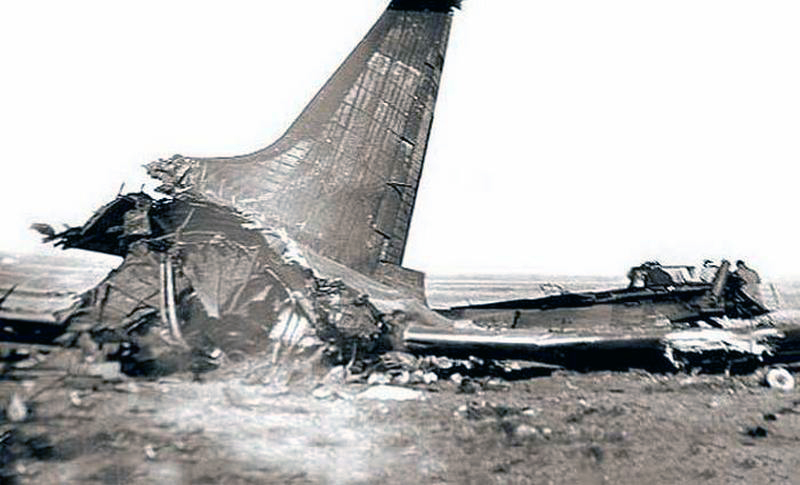
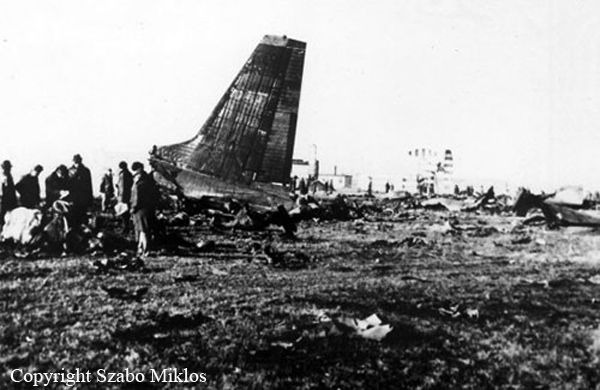
Crash of a Tupolev TU-134A in Kiev: 49 killed
Date & Time:
Sep 16, 1971 at 1143 LT
Registration:
HA-LBD
Survivors:
No
Schedule:
Budapest - Kiev
MSN:
9 35 08 01
YOM:
1969
Crew on board:
8
Crew fatalities:
Pax on board:
41
Pax fatalities:
Other fatalities:
Total fatalities:
49
Circumstances:
On approach to Kiev-Borispol Airport in poor weather conditions, the crew encountered technical problems with the generator that failed and he was forced to switch to auxiliary batteries. Due to limited visibility caused by foggy conditions, the crew made a go-around. Few minutes later, a second attempt to land was also abandoned. During the third approach, the airplane crashed in a field located few km short of runway and was totally destroyed upon impact. All 49 occupants were killed.
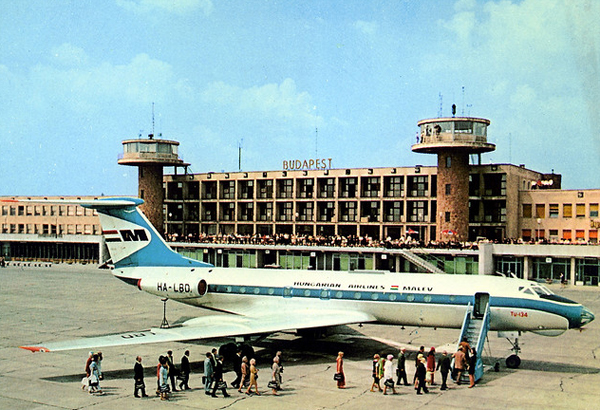
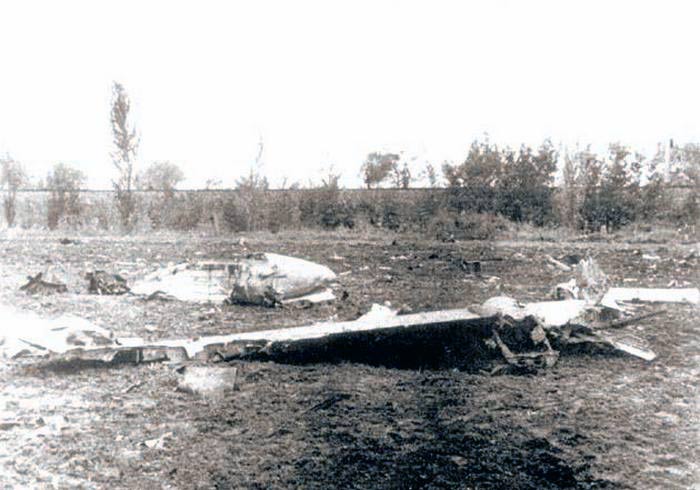

Crash of a Lisunov LI-2P in Budapest
Date & Time:
Jun 9, 1957
Registration:
HA-LIM
Survivors:
Yes
Schedule:
Budapest – Pécs
MSN:
234 410 07
YOM:
1952
Crew on board:
0
Crew fatalities:
Pax on board:
0
Pax fatalities:
Other fatalities:
Total fatalities:
0
Circumstances:
Few minutes after takeoff from Budapest-Ferihegy Airport, the crew reported engine problems and received the permission to return for a safe landing. On short final, the airplane stalled and crashed few dozen yards short of runway 31L. All occupants were evacuated safely while the aircraft was damaged beyond repair.
Probable cause:
Engine failure.
